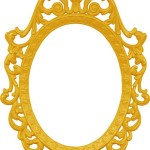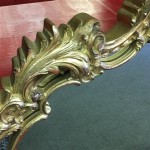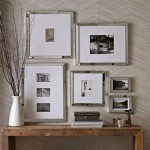What Is a Beveled Mirror?
A beveled mirror is a mirror with its edges sloped or angled, creating a framed appearance. This angled edge, known as the bevel, catches and reflects light differently than the flat surface of the mirror, adding depth and dimension. The bevel is essentially a polished slant cut into the thick glass of the mirror, creating a decorative frame effect within the mirror itself.
The width of the bevel can vary significantly, impacting the overall aesthetic. Narrow bevels offer a subtle, understated elegance, while wider bevels create a more dramatic, pronounced effect. This variability allows beveled mirrors to complement a wide range of design styles, from traditional to contemporary.
The process of creating a beveled edge requires specialized machinery and skilled craftsmanship. The glass is first cut to the desired size and shape. Then, a specialized grinding machine, often equipped with diamond abrasives, carefully grinds the edges at a specific angle to create the bevel. The width and angle of the bevel are precisely controlled during this process. Following grinding, the beveled edges are polished to a smooth, gleaming finish, enhancing their reflective qualities.
Beveled mirrors are not a recent invention. Historical evidence points to their use in ancient civilizations, particularly by the Romans and Egyptians. These early beveled mirrors were likely created through laborious hand-grinding techniques. The popularity of beveled mirrors experienced a resurgence during the Victorian era and has remained a classic design element ever since.
One of the primary functions of a beveled mirror is to enhance the decorative aspect of a space. The play of light and shadow created by the angled edges adds a touch of elegance and sophistication. This reflective quality can also help brighten a room by scattering light more effectively than a flat mirror.
Beyond their decorative function, beveled mirrors can also contribute to the perceived spaciousness of a room. The reflective surface, coupled with the depth created by the bevel, can create an illusion of greater size, making a room appear larger and more open.
Beveled mirrors are highly versatile and can be incorporated into a variety of design schemes. In traditional interiors, they often complement ornate furniture and rich color palettes, adding a touch of classic elegance. In more contemporary settings, beveled mirrors can provide a subtle textural element, contrasting with clean lines and minimalist aesthetics.
The placement of a beveled mirror can greatly influence its impact on a room. Positioning a large beveled mirror opposite a window can maximize natural light reflection, brightening the space significantly. Smaller beveled mirrors can be used as accent pieces, adding a touch of sparkle and dimension to walls or shelves.
Beveled mirrors are available in a variety of shapes and sizes, offering flexibility for design applications. Traditional rectangular and square shapes are common choices, while circular, oval, and other geometric shapes are also available. Custom shapes can be created to meet specific design requirements.
Choosing the right beveled mirror involves several considerations. The size of the mirror should be proportionate to the surrounding space and furniture. The width of the bevel should be selected based on the desired level of visual impact. The overall style of the mirror, including its shape and frame (if any), should complement the existing décor.
While beveled mirrors are undeniably aesthetically pleasing, they also require specific care and maintenance. Cleaning should be done with a soft, lint-free cloth and a gentle glass cleaner. Abrasive cleaners or harsh chemicals should be avoided, as they can damage the delicate beveled edges and the mirrored surface. Proper handling is also crucial to prevent chipping or cracking of the beveled edges.
Beveled mirrors offer a timeless appeal, capable of enhancing a wide range of interior styles. Their ability to reflect light, create depth, and add a touch of elegance makes them a valuable design element. From grand statement pieces to subtle accent mirrors, beveled mirrors continue to be a sought-after choice for those seeking to add a touch of sophistication to their homes.
The inherent reflective qualities of beveled mirrors make them suitable for various applications beyond wall décor. They can be incorporated into furniture pieces, such as dressing tables, vanities, and cabinet doors, enhancing their visual appeal. Beveled mirror tiles can also be used to create unique and eye-catching backsplashes or decorative wall features.
The cost of a beveled mirror is influenced by several factors, including the size, thickness, and complexity of the bevel, as well as the quality of the glass and the craftsmanship involved. Larger mirrors with wider bevels generally command higher prices. Custom shapes and intricate designs can also increase the cost.

Frameless Beveled Rectangle Mirror Better Bevel Made In Usa

Bevel Edge Mirror Diffe Sizes Melbourne Bathroom
Beveled Glass Mirrors In Northern Virginia Abc Mirror

Flat Vs Beveled Frameless Mirrors Find The Right Style

Beveled Mirror Egan Interiors

Rectangle Mirror Range With Inverse Or Reverse Bevel

Beveled Frame Rectangle Wall Mirror Kirklands Home

1 Beveled Mirror Divided Style

Bevel Edge Mirror 1200 X 900 Bathrooms On A Budget

Glacier Bay 36 In W X H Frameless Square Beveled Edge Bathroom Vanity Mirror Silver 81182 The Home Depot








